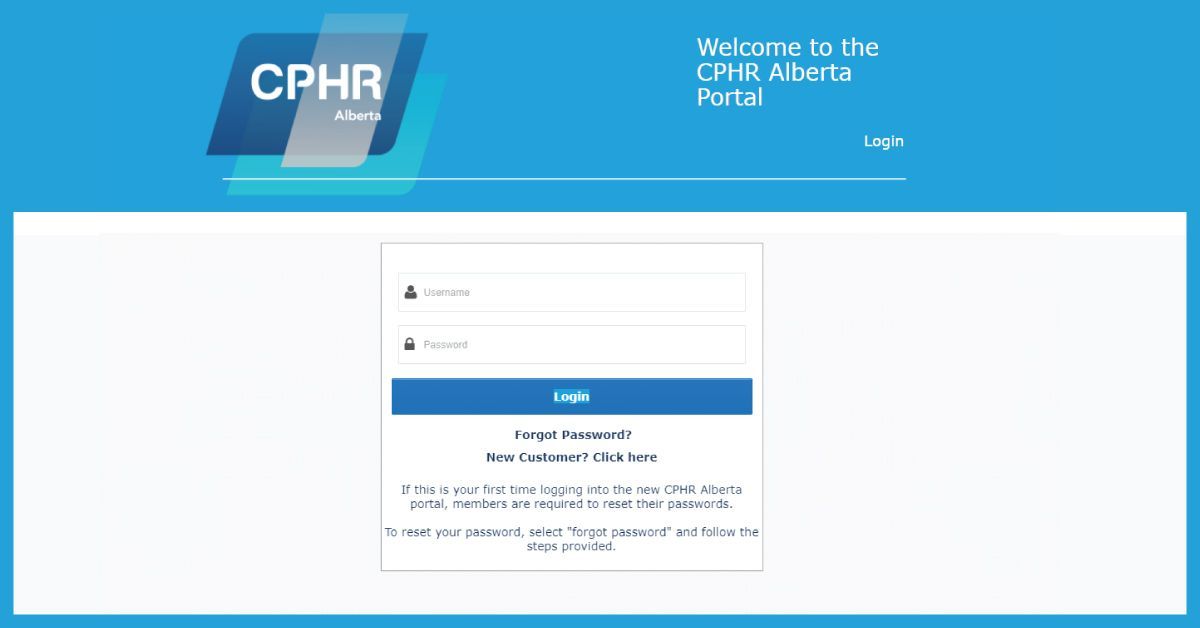
Exploring the CPHR Alberta Portal

On January 6, 2022 the CPHR Alberta team held a webinar to explore the layout of our new portal.
We are excited for the opportunities this new system provides our members and will be rolling out additional features over the next several months.
Thank you to everyone who attended and for the great engagement we saw in the chat and Q and A. As we all navigate the new system it is important to share our learnings as it will often support others who are working through the same steps.
If you were unable to join but would like an overview of your portal you can watch the webinar recording on-demand here. If you are experiencing any issues or require assistance within the new portal please reach out to our staff via email at info@cphrab.ca and we would be happy to assist.
Our team will continue to provide information sessions on navigating different areas of the new portal over the next six months and we encourage you to attend the sessions that directly apply to or that would like to find clarity on.
Below we have included some great new features of our system as well as additional features that will be available in coming months.
Features of our new system:
CPD Logs
Submitting your CPD Log is quick and easy in the new portal. To complete submission of your log, you will sign into the system, click on Continuing Professional Development Log , add your remaining activities for the year, review all your recent activities recorded by clicking on the Summary of CPD Hours within your CPD log and then submit your CPD log as usual.
CPD logs can be submitted up to January 15, 2022, without penalty.
Please note that if you had previously worked on your 2021 log in our old system, any activity you recorded before November 12, 2021 was carried over into the new system.
If you submitted your 2021 CPD log in our previous system, we have submitted the log for you in our new system as well, so you are up to date! Thank you for submitting on time.
It is important for us to note that while the hours and dates were carried over, due to constraints on fields and conversion of data, the recorded descriptions were not converted over. If you would like a copy of the details from your profile in the previous system please let us know.
Event Registration
As we open registration for professional development and networking opportunities offered in January, they will appear in your member portal. You will no longer be redirected to complete registration and make payment; this will now be a one stop shop from registration to viewing your receipts and event follow up details. Events registered for through your portal that qualify for CPD hours will also be automatically added to your CPD log once attendance has been confirmed.
Members will also see workshops and orientations that they are eligible for such as the NKE prep workshops and Candidate and Chartered member orientations. A full history of your event activity will be available in your portal.
Communication History and Subscriptions
Member communication preferences will require updates. To update your subscriptions, click on “Communication Preferences” under the MENU.
A record of all e-communications received from CPHR Alberta, or our automated action system will be archived in your Message History, available in your profile. This will include your opt in options as well as receipts, event registration details, application submissions and more. If you missed an email or would like to review old details check the Message History block on your homepage for more information.
Application Updates
Any applications submitted through our system will be available in your applications block. This could include applying for membership, submitting a CPD log, requesting a category transfer, submitting your EVA or any other submissions. This section will also include a status report so you will be aware of the stage your application is currently in such as pending, approved, complete, etc.
Career Center
We are excited for the launch of a new career center later this month. Members will be updated once this feature is available.
The views and opinions expressed in this blog post belong solely to the original author(s) and do not necessarily represent the views and opinions of CPHR Alberta.





